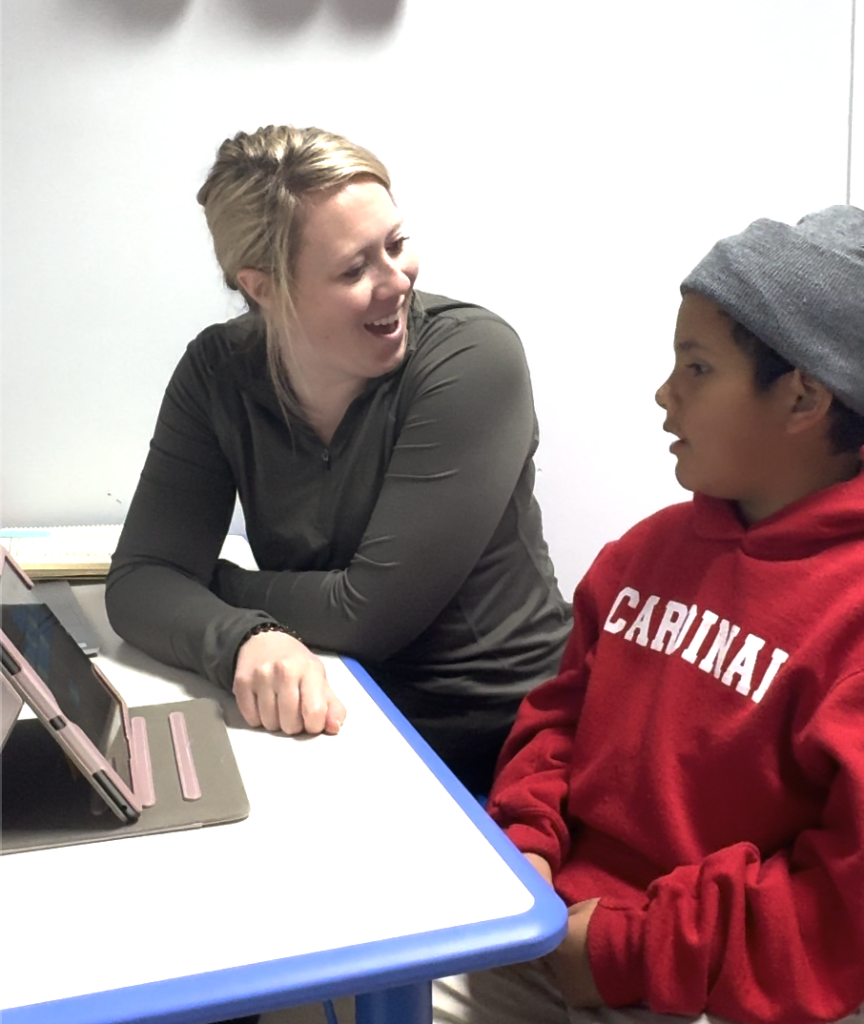
Ms. Katie and a friend are practicing phonology!
Decoding Dyslexia: Myths, Facts, and Support Strategies for Parents
By Team Therapy Smarts
How common is dyslexia?
Very common– in fact, it’s the most common type of learning disability estimated to affect 1 in 5 kids. Unfortunately, it’s often misunderstood by families, educators, and even individuals who struggle with it. Estimates suggest that as much as 15 – 20% of the total population struggle with some of the symptoms of dyslexia.
Support for children with dyslexia is twofold, and often requires accommodations through school, alongside emotional support from family and friends. Most importantly, a diagnosis of dyslexia does not mean that your child will not be able to succeed academically. With the bolstering of a supportive home environment, and teachers who understand his or her unique needs, your child can embrace the process of learning.
What is Dyslexia?
Dyslexia is a language-based learning disability connecting speech with letters. Those who have the disability struggle with accurate and fluent word-recognition. According to the International Dyslexia Association, dyslexia can show through multiple symptoms, but most often affects children’s ability to read, write, and spell.
The symptoms of dyslexia can vary according to the individual. Some children are able to master the early stages of reading and writing, but begin to struggle when expected to complete more complex topics, such as writing in paragraphs.
Recognizing the Signs
Below are just a few signs of dyslexia common in each age group. Bear in mind that individuals with dyslexia will most likely demonstrate a unique constellation of these traits, and symptoms may show up earlier or later, based on the individual:
Preschool
Enjoys listening to stories, but shows little interest in letters or individual words.
Difficulty learning nursery rhymes or the alphabet.
Confuses directional language
For example, a child may use “up” in place of “down”.
Trouble following directions
A child may struggle with performing two directions in sequence (for example, “pick up your toy and place it on the shelf”) but can handle tasks presented in smaller units.
Elementary School
Reading
Has slow reading progress— they may sound hesitant or strained, especially if asked to read aloud.
Has difficulty in establishing syllable division or knowing the beginning and ending of words.
Loses the point of a story being read or written.
Writing
Has poor handwriting with many badly-formed letters or “reverals” with letters like “b” and “p”
Spells a word several different ways in a piece of writing.
Makes anagrams of words — for example, writes “tired” instead of “tried” or “bread” for “beard”
High School
Reading
Struggles to use dictionaries, directories or encyclopedias
Has difficulty in summarizing the main point of a passage
Loses their place easily or uses a finger/marker to keep their place.
Writing
Demonstrates a noticeable disconnect between written and oral skills.
Has difficulty with punctuation and grammar.
Writes a great deal but “loses the thread”.
How is Dyslexia Diagnosed?
If your child is struggling in school, an evaluation is an excellent way to begin to determine the source of their difficulties. Experts recommend evaluating your child for dyslexia midway through first grade, around six years old. This is because they have had some experience with formal teaching methods for reading and writing.
The evaluation process begins with your family and the child’s teacher. You’ll be asked questions about their development, and experience with education so far. You may also be asked about any family history of learning delays, as research suggests that family history may play a role in the diagnosis.
Following this background information, your child will likely be tested on some of the following skills:
Oral Language Skills: or, our ability to listen and express our thoughts through speech. They may be asked to listen to a story or follow a short series of directions.
Word Recognition: The ability to read and identify single printed words.
Decoding: The ability to identify unknown words by sounding them out or chunking the word into smaller parts.
Phonological processing: This process gives us the ability to think about and sequence sounds, to link those sounds to letters and words.
